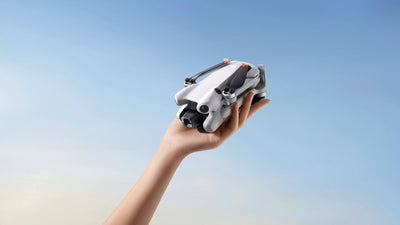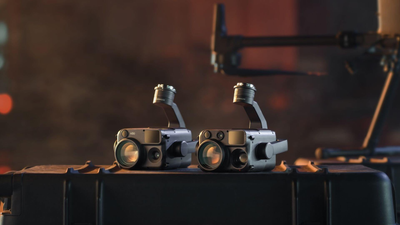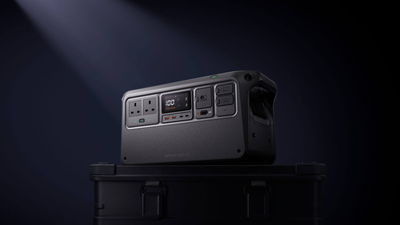Best Practices For Storing & Protecting Your Drone
- by Stefan Gandhi
Every flight begins and ends with storage. For enthusiasts who invest time, passion and money, protecting your drone is about more than just avoiding a crash. It’s about ensuring your gear is ready when inspiration strikes. Whether you’re gearing up for a weekend trip or retiring the drone for winter, smart storage habits keep your drone flying longer and performing better.
Short-Term vs. Long-Term: Understand the Mission
Think of short-term storage as field-ready mode: portability, accessibility and ruggedness. You need impact protection on hikes, city trips or road journeys. Long-term storage, by contrast, is preservation mode. It’s about defending against time, humidity and battery decay.
Short-term storage prioritises mobility: padded backpacks, shoulder slings or custom cases that cushion your drone from the rigours of travel. Long-term setups shift focus: think climate control, stable environments and half-charged batteries.
On-the-Go Options: Soft Cases, Hard Cases & Hybrids
Hard Cases: Built Like Tanks
Hard-shell cases offer maximum protection. Ideal for vehicle transport or air travel, they come with custom foam inserts that cradle each component. Brands like Pelican and Nanuk dominate this space, offering weatherproof and crush-resistant durability.
Pros:
- Impact and weather resistance
- Organised compartments
- Peace of mind in extreme conditions
Cons:
- Heavy and bulky
- Expensive at the top end
Use these when weight isn’t a concern but protection is paramount. A Mavic or Inspire pilot heading into rugged terrain? This is your armour.
Soft Cases & Backpacks: Agile and Accessible
For casual outings, backpacks and soft cases are ideal. These offer padded interiors and plenty of accessory space, often doubling as camera gear bags. DJI's Fly More combo bags or third-party camera packs provide great flexibility.
Pros:
- Lightweight and easy to carr
- Multi-use storage (drones, cameras, laptops)
- Airline-friendly sizes
Cons:
- Less protection than hard shells
- Can be tight on space for multiple drones or accessories
Perfect for the day-tripper or urban explorer. Combine convenience with enough padding for most environments.
Hybrid Approaches: The Best of Both Worlds
Many hobbyists mix and match. You might store your drone in a hard shell and place it inside a backpack. Or use a semi-rigid foam case in a camera bag. Some even repurpose metal ammo boxes or use stealthy unbranded bags to avoid attention in public.
Long-Term Storage: Keeping Your Drone Flight-Ready
Climate Control: Your First Defence
Electronics hate moisture. Store your drone in a cool, dry place. Ideal conditions are around 22°C with 40 to 50 percent relative humidity. If you’re in a humid climate, invest in silica gel packs or a dry cabinet.
Avoid garages, attics or anywhere prone to temperature swings. Dust covers or cloth wraps help shield against UV and airborne grime.
Battery Care: The Heartbeat of Your Drone
Lithium-polymer (LiPo) batteries demand special care:
- Store at 40 to 65 percent charge
- Never full or near-empty
- Remove from drone if stored for weeks
Use LiPo-safe bags for added security, especially if stored near flammable materials. Recheck every 3 months with a full cycle charge/discharge. This keeps battery chemistry active and prevents power meter drift.
Drone Maintenance: Don’t Just Stash and Forget
Before putting your drone into long-term hibernation:
- Clean it: remove dirt, dust, salt or debris
- Detach or reposition propellers to reduce pressure
- Cover the gimbal and lens
- Update firmware if needed
- Store on a stable surface, not stacked under weight
A quick power-up every few months can prevent gimbal stiffness or motor issues.
Travel and Transport: Navigating Real-World Adventures
Flying Abroad or Road-Tripping? Know the Rules
Always carry drones and batteries in hand luggage. Most DJI batteries are under 100Wh and allowed in carry-on bags. Use LiPo-safe sleeves or terminal caps to prevent short circuits.
Avoid full charges during flights. Partially charged batteries are safer and may meet airline preferences. For checked baggage (drone only, no batteries), a hard case is essential.
Driving? Don’t Cook Your Drone
Don’t leave your drone in a hot car. Car interiors can warp plastics and damage batteries. Keep cases strapped down and avoid direct sunlight. If you’re off-roading, seal the bag against dust or use waterproof layers.
Conclusion
Your DJI drone is more than a gadget. It’s your creative vehicle. Treat it well in storage and it will treat you well in flight. Whether you opt for a rugged Pelican case, a stealthy backpack or a climate-controlled cabinet, the right protection strategy means fewer repairs and more adventures.
So prep that gimbal, charge those batteries just right, and choose the case that fits your lifestyle. Because the sky’s not the limit. It’s the starting line.




